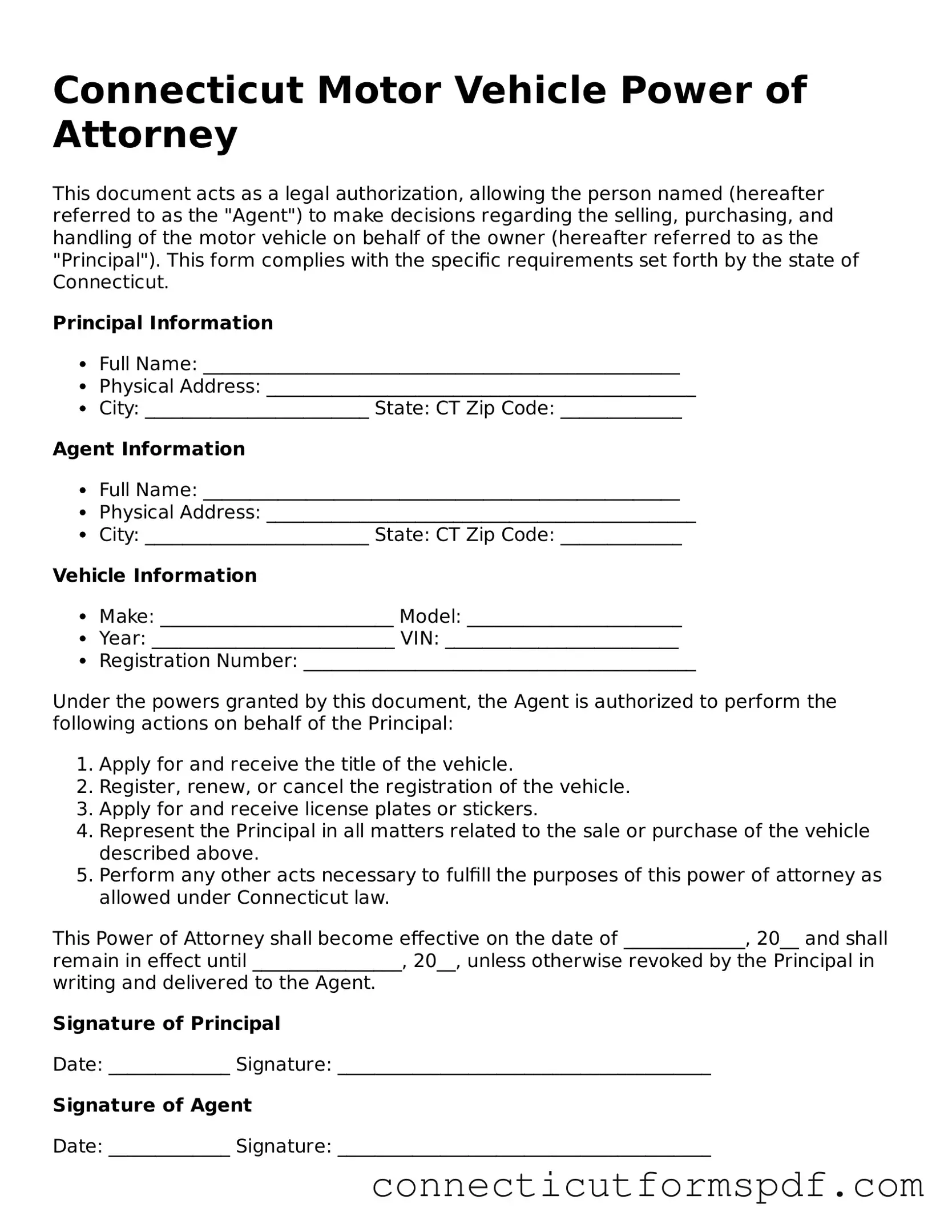Connecticut Motor Vehicle Power of Attorney
This document acts as a legal authorization, allowing the person named (hereafter referred to as the "Agent") to make decisions regarding the selling, purchasing, and handling of the motor vehicle on behalf of the owner (hereafter referred to as the "Principal"). This form complies with the specific requirements set forth by the state of Connecticut.
Principal Information
- Full Name: ___________________________________________________
- Physical Address: ______________________________________________
- City: ________________________ State: CT Zip Code: _____________
Agent Information
- Full Name: ___________________________________________________
- Physical Address: ______________________________________________
- City: ________________________ State: CT Zip Code: _____________
Vehicle Information
- Make: _________________________ Model: _______________________
- Year: __________________________ VIN: _________________________
- Registration Number: __________________________________________
Under the powers granted by this document, the Agent is authorized to perform the following actions on behalf of the Principal:
- Apply for and receive the title of the vehicle.
- Register, renew, or cancel the registration of the vehicle.
- Apply for and receive license plates or stickers.
- Represent the Principal in all matters related to the sale or purchase of the vehicle described above.
- Perform any other acts necessary to fulfill the purposes of this power of attorney as allowed under Connecticut law.
This Power of Attorney shall become effective on the date of _____________, 20__ and shall remain in effect until ________________, 20__, unless otherwise revoked by the Principal in writing and delivered to the Agent.
Signature of Principal
Date: _____________ Signature: ________________________________________
Signature of Agent
Date: _____________ Signature: ________________________________________
This document does not require notarization under Connecticut law but notarization may provide additional legal assurance.
Connecticut Compliance
This power of attorney is designed to comply with the Connecticut General Statutes. By signing above, the Principal and the Agent affirm that their actions under this power of attorney shall be within the limitations of Connecticut law.
